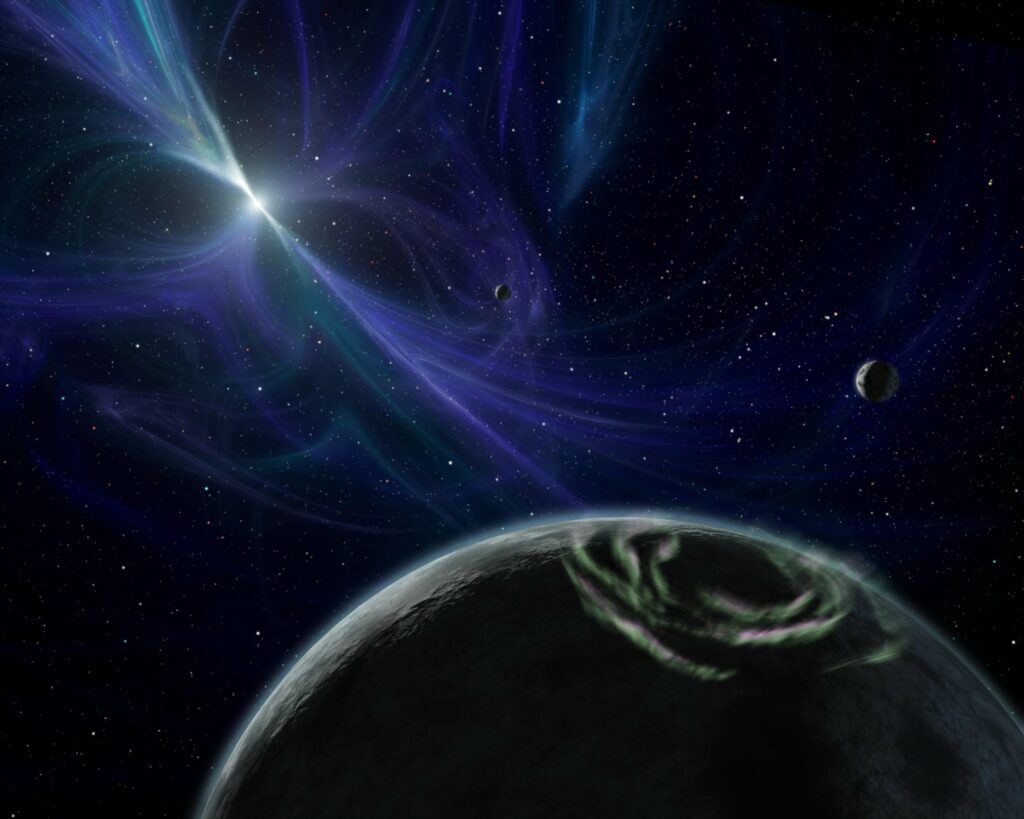First Ever Exoplanet Discovered Is MIND BOGGLING
The first exoplanet wasn’t discovered until 1992, and that exoplanet was so unusual, that we still have a hard time finding such worlds. It orbits around a pulsar called PSR B1257+12.
Thirty years ago, the first exoplanets were found around a pulsar, a star that rotates extremely quickly. Astronomers have now discovered that these planets could be extremely uncommon. Iuliana Nițu, a Ph.D. candidate at the University of Manchester, will present the new study tomorrow (Tuesday, July 12) at the National Astronomy Meeting (NAM 2022).
Currently, it is uncertain what conditions lead planets to originate and persist orbiting pulsars. Less than 0.5 percent of all known pulsars may contain planets with an Earth-mass, according to a scan of 800 pulsars conducted by the Jodrell Bank Observatory over the past 50 years. This suggests that the first planetary system to be discovered is likely to be extremely rare.
The densest stars in the cosmos, neutron stars, such as pulsars, are produced by strong explosions at the conclusion of the lives of ordinary stars. They rotate quickly, have tremendously powerful magnetic fields, and are exceptionally stable. From their magnetic poles, pulsars release brilliant radio emission beams that seem to pulse as the star rotates.

Like a cosmic lighthouse, “[Pulsars] generate signals that sweep the Earth every time they revolve,” claims Niţu. The research that can be produced from these signals using radio telescopes is incredible.
The first exoplanets were found in 1992 around a pulsar known as PSR B1257+12. At least three planets with masses comparable to the rocky planets in our Solar System are known to exist in the planetary system. Since then, a few pulsars that contain planets have been discovered. However, ‘regular’ planet formation is improbable given the incredibly violent circumstances surrounding pulsar births and lifetimes, and many of these found planets are unusual things (such planets formed primarily of diamond) that are different from those we are familiar with in our Solar System.
The University of Manchester’s astronomy department led the biggest planets orbiting pulsars search to date. The scientists specifically searched for signs of planets with partners that have masses up to 100 times that of the Earth and orbital periods of 20 days to 17 years. The system PSR J2007+3120, which may include at least two planets with masses a few times that of the Earth and orbital periods of 1.9 and 3.6 years, is the most promising of the ten possible detections.
The study’s findings show no bias in favor of specific planet masses or orbital periods in pulsar systems. In contrast to the near-circular orbits observed in our Solar System, the results provide provide information on the geometry of these planets’ orbits. These planets would orbit their stars on significantly elliptical routes. This suggests that pulsar-planet systems form very differently from conventional star-planet systems.

Nițu explains the driving force for her research as follows: “The unique and immensely fascinating item known as a pulsar. The first extrasolar planets were found around pulsars exactly 30 years ago, yet scientists still don’t know how they formed or managed to live in such harsh environments. A vital first step in doing this is learning how prevalent they are and what they look like.”
Do not forget to share your opinion with us to provide you with the best posts !




0 Comments